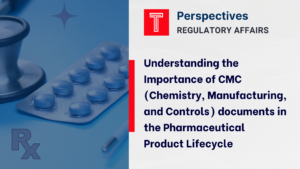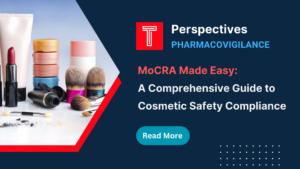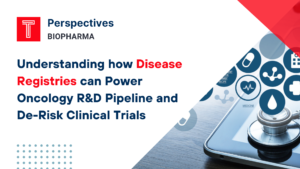Mastering Medical Device Registrations: A Guide to Navigating Regulatory Pathways
As a medical device manufacturer, navigating the complex landscape of regulatory requirements and successfully registering your devices is crucial for market access and commercial success. Medical device registrations play a crucial role in ensuring patient safety, maintaining quality standards, and facilitating market access for medical devices. Manufacturers must prioritize registration to ensure their devices meet regulatory standards, gain market approval, and contribute to improved healthcare outcomes. Following are some of the key drivers for medical device registrations:
Regulatory Compliance: Registering medical devices is a regulatory requirement in many jurisdictions. Regulatory authorities, such as the FDA in the United States or the European Medicines Agency (EMA) in the European Union, enforce registration processes to ensure that medical devices meet safety, quality, and performance standards. Compliance with these regulations is essential to avoid penalties, legal consequences, and potential market withdrawal.
Patient Safety: Registering medical devices helps ensure patient safety by verifying that the device has undergone appropriate testing, validation, and assessment. Regulatory authorities evaluate device safety and effectiveness to protect patients from potential harm. Registration requires companies to provide evidence of the device’s safety profile, including clinical data, risk assessments, and post-market surveillance plans.
Market Access: Device registration is a prerequisite for market access in most countries. Companies must register their devices with the regulatory authority in each targeted market to legally sell and distribute the product. Without proper registration, companies cannot enter new markets, reach patients in need, or gain a competitive advantage. Registration provides market authorization, allowing companies to commercially distribute their medical devices.
Reimbursement and Insurance Coverage: In many healthcare systems, reimbursement and insurance coverage for medical devices are linked to device registration. Government payers, private insurance companies, and reimbursement agencies often require evidence of device registration to consider coverage and reimbursement decisions. Without registration, patients may face challenges accessing the device or reimbursing the associated costs.
Post-Market Surveillance: Device registration facilitates post-market surveillance activities, including adverse event reporting, product recalls, and safety monitoring. Registered devices are tracked and monitored to identify any emerging safety concerns or performance issues. This enables regulatory authorities to take appropriate actions to protect public health and ensure device safety.
Global Harmonization and Trade: Medical device registrations support global harmonization efforts, facilitating trade and collaboration among countries. Regulatory agencies align their requirements and standards to ensure consistency, making it easier for manufacturers to navigate multiple markets. Registrations based on international standards help streamline processes and reduce barriers to market entry.
Example scenarios which require medical device registrations:
- A company developing an innovative implantable cardiac device must register the device to comply with regulatory requirements, demonstrate its safety and efficacy, and gain market approval from the FDA or other relevant regulatory bodies.
- A manufacturer of diagnostic imaging equipment needs to register their devices to ensure compliance with safety standards, demonstrate their accuracy and performance, and obtain market access in different countries to expand their customer base.
- A company developing a new digital health application for remote patient monitoring must register the software as a medical device to comply with regulatory requirements, ensure patient data privacy, and gain credibility among healthcare professionals and potential customers.
Contact us by submitting a business inquiry online. We will get back to you very soon.
How to complete Medical Device Registration with different Regulatory Agencies
United States – FDA 510(k) Clearance or Premarket Approval (PMA): Medical device manufacturers targeting the U.S. market need to register their devices with the U.S. Food and Drug Administration (FDA). The registration process includes submitting a 510(k) premarket notification or a Premarket Approval (PMA) application, depending on the device’s risk classification. For example, a manufacturer of a new electrocardiogram (ECG) monitoring device would need to obtain FDA clearance or approval to market their product in the United States.
European Union – CE Marking: Medical device manufacturers seeking to market their products in the European Union (EU) must register their devices and obtain CE marking. The CE marking indicates compliance with the EU Medical Devices Regulation (MDR) or In Vitro Diagnostic Medical Devices Regulation (IVDR). For instance, a company developing a new implantable orthopedic device would need to register the device and undergo conformity assessment to affix the CE marking for EU market access.
Canada – Health Canada Medical Device License: Companies planning to sell medical devices in Canada must register their products with Health Canada and obtain a Medical Device License. The registration process involves submitting a detailed application, including evidence of device safety, effectiveness, and compliance with Canadian regulations. An example would be a manufacturer of a new medical imaging system seeking Health Canada’s approval to market their device in Canada.
Japan – Pharmaceutical and Medical Device Agency (PMDA) Approval: Medical device manufacturers targeting the Japanese market must register their devices with the PMDA. The registration process includes the submission of technical documentation, clinical data (if required), and compliance with Japanese regulations. For instance, a company developing a new diagnostic device for detecting infectious diseases would need to obtain PMDA approval for marketing the device in Japan.
Australia – Therapeutic Goods Administration (TGA) Conformity Assessment: Companies wishing to sell medical devices in Australia need to register their products with the TGA and undergo a conformity assessment. The assessment verifies that the device meets Australian standards and regulatory requirements. For example, a manufacturer of a new implantable cardiac pacemaker would need to register the device and obtain TGA approval for market access in Australia.
India – To initiate medical device registration in India, manufacturers must navigate the registration process overseen by the Central Drugs Standard Control Organization (CDSCO). Manufacturers must stay updated with changing regulations and adapt their strategies accordingly. For example, the recent introduction of the Medical Device Rules 2017 and subsequent amendments brought significant changes to the registration requirements, including the classification system and the introduction of unique device identification (UDI) for certain device classes.
These examples highlight the need for medical device manufacturers to register their products with different regulatory agencies worldwide. Each jurisdiction has specific regulations and requirements to ensure the safety, effectiveness, and quality of medical devices available to healthcare providers and patients. By registering with the appropriate regulatory agencies, manufacturers can legally market their devices in different markets, gain customer trust, and contribute to patient care.
Overcoming Challenges While Completing Medical Device Registrations
Medical device registrations can present several challenges due to the complex regulatory landscape and varying requirements across different jurisdictions. Here are some common challenges in medical device registrations and practical methods to overcome them:
Regulatory Compliance: Navigating and complying with diverse and evolving regulatory requirements in different regions can be challenging. Stay updated on regulatory changes by actively monitoring updates from regulatory authorities and seeking guidance from regulatory experts. Engage in early communication with regulatory authorities to clarify requirements and seek their input. Establish strong relationships with regulatory consultants or specialized firms to ensure compliance with relevant regulations.
Classification and Risk Assessment: Proper classification and risk assessment of medical devices can be complex, particularly for innovative devices or those without clear predicates. Seek guidance from regulatory experts or consultants who are well-versed in device classification and risk assessment. Conduct thorough research and gather relevant scientific evidence to support the device’s classification and risk profile. Engage in discussions with regulatory authorities to obtain their input and ensure alignment on classification and risk assessment.
Clinical Evidence Requirements: Generating and collecting sufficient clinical evidence to support the safety and efficacy of the device can be time-consuming and resource-intensive. Design and conduct well-planned clinical studies that align with regulatory requirements. Consider leveraging real-world evidence, post-market surveillance data, or data from similar devices to complement clinical data. Collaborate with experienced clinical research organizations (CROs) to optimize study design, patient recruitment, and data collection processes.
Quality Management System (QMS) Compliance: Establishing and maintaining a robust QMS that meets regulatory expectations can be challenging, especially for smaller companies with limited resources. Implement a comprehensive QMS that aligns with internationally recognized standards such as ISO 13485. Engage with quality experts or consultants to develop and implement an efficient QMS. Conduct regular internal audits and invest in staff training to ensure ongoing compliance with QMS requirements.
Timelines and Time-to-Market: The registration process can be time-consuming, potentially delaying market entry and time-to-market. Develop a detailed project plan that includes realistic timelines for each stage of the registration process. Anticipate potential delays and build buffers into the timeline. Proactively communicate with regulatory authorities, leveraging pre-submission meetings or expedited review programs, where available, to expedite the process. Consider leveraging regulatory expedited pathways, such as the FDA’s Breakthrough Device Designation or the EU’s Priority Review, when applicable.
Local Representation and Language Barriers: Some jurisdictions require local representation or authorized agents, which can pose challenges in identifying suitable partners with regulatory knowledge and language proficiency. Seek guidance from regulatory consultants or legal advisors familiar with the target region to identify reputable local representatives or distributors. Evaluate their experience, capabilities, and language proficiency to ensure effective communication and collaboration.
These methods provide practical approaches to overcoming challenges in medical device registrations. However, it’s important to tailor strategies to the specific context and seek guidance from regulatory experts who can provide customized solutions based on the device, target markets, and regulatory landscape. By proactively addressing challenges and leveraging expert support, companies can navigate the registration process more efficiently and ensure compliance with regulatory requirements.
How We Can Help
Are you a medical device manufacturer seeking seamless market access and regulatory compliance for your innovative products? At Techsol, our Medical Device Registration Services are designed to accelerate your path to global markets while ensuring compliance with regulatory requirements. Our team of regulatory experts combines deep industry knowledge with a proven track record of successful registrations worldwide. We offer comprehensive solutions tailored to your unique needs, simplifying the registration process and saving you valuable time and resources.
Contact us today to embark on a seamless journey toward global market access!






